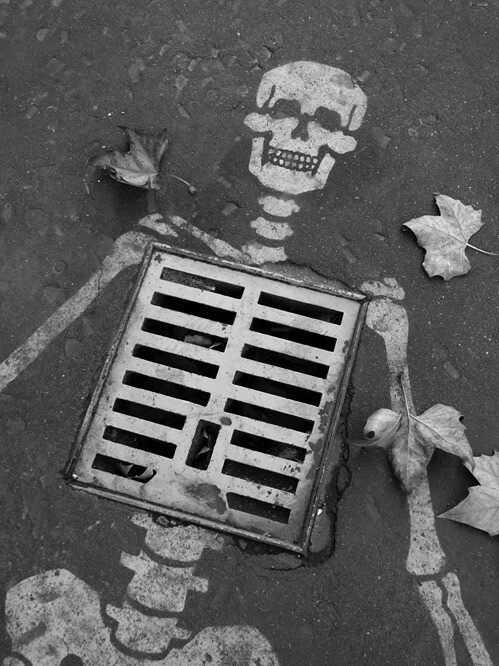I was thinking about this after a discussion at work about large language models (LLMs) - the initial scrape of the internet before Chat GPT become publicly usable was probably the last truly high quality scrape of human-made content any model will get. The second Chat GPT went public, the data pool became tainted with people publishing information from it. Future language models will have increasingly large percentages of their data tainted by AI-generated content, skewing the results away from how humans actually write. To get actual human content, they may need to turn to transcriptions of audio recordings or phone calls for training, and even that wouldn’t be quite correct because people write differently than they speak.
I sort of wonder if eventually people will start being influenced in how they choose to write based on seeing this AI content. If teachers use AI-generated texts in school lessons, especially at lower levels, will that effect how kids end up writing and formatting their work? It’s weird to think about the wider implications of how this AI stuff will ultimately impact society.
What’s your predictions? Is there a future where AI can get a clean, human-made scrape? Are we doomed to start writing like AIs?
AI might in the medium-term change our vernacular but it won’t be for the worse, generally, and most people won’t feel much of a change in most contexts.
I liken it to the invention of the steamshovel excavator. Now your average worker doesn’t need massive muscles to get work done quickly, but it’s not like shovels went away for good, it’s still used in parts of projects.
There are some in the research community that agree with your take: THE CURSE OF RECURSION: TRAINING ON GENERATED DATA MAKES MODELS FORGET
Basically the long and short of that paper is that LLMs are inherently biased towards likely responses. The more their training set is LLM generated, and thus contains that bias, the less the LLM will be able to produce unlikely responses, over time degrading the model quality throughout successive generations.
However, I tend to think this viewpoint is probably missing something important. Can you train a new LLM on today’s internet? Probably not, at least without some heavy cleaning. Can you train a multimodal model on video, audio, the chat logs of people talking to it, and even other better LLMs? Yes, and you will get a much higher quality model and likely won’t get the same model collapse implied by the paper.
This is more or less what OpenAI has done. All the conversations with 100M+ users are saved and used to further train the AI. Their latest GPT4 is also trained on video and image recognition, and they have also been exploring ways for LLMs to train new ones, especially to aid in alignment of these models.
Another recent example is Orca, a fine tune of the open source llama model, which is trained by GPT-3.5 and GPT-4 as teachers, and retains ~90% of GPT-3.5’s performance though it uses a factor of 10 less parameters.
My take is that "L"LMs are already old news. I think targeted or limited data-set language models are going to be the next wave.
I think this partly because very few people can do LLMs at the scale of Microsoft and Google so I think smaller firms and people in their garage are going to aim their sights on smaller targeted data sets with a eye towards factual accuracy.
And then maybe link them/daisy chain them together. I hope there is this unix philosophy for models where they do one thing well but you can ‘pipe’ data from one to another.
Slightly unrelated, but I was just talking with a friend about how we’re going to have similar issues with young artists trying to copy ai. As is, many young artists will turn to cartoons instead of real life when starting out. Their work is a bastardization of a bastardization, with serious flaws in anatomy, gravity, light, and depth. They go on to call those mistakes their “style” and point to other artists making those same mistakes to normalize them. Since “style” isn’t something they think they need to improve on, they may become good artists overall while having severe, glaring holes in their skillet that any professional can see. You can sometimes even tell when someone started out because “90s anime” or “10s cartoon network” made specific stylistic choices that changed over time.
So I think ai is going to cause similar problems. Newbies will copy what looks pretty to the untrained eye and learn an ai based style. Then when they become more popular they’ll be fed into ai as reference material and perpetuate the problem. Even worse is actual professionals may turn to ai instead of real life references or a desk mannequin. Then their skills may degrade because they rely too much on improper tools. (I’ve already seen this becoming an issue with photoshopped reference photos.)
Anyways, that’s my $0.02
It’s not just art, mass media means we live in the state of hyperreality -where we cannot differentiate between tour chosen representation (signs, symbols) of reality from reality itself-
Most of us have personally experienced far less than what we have consumed through media. Much of our understanding of reality is completely rooted in symbols that we have no grounding for understanding and contextualization.
I’ve heard this theory. Feels like unrealistic hopeful wishes of people who want AI to fail.
LLM processing will be a huge tool for pruning and labeling training sets. Humans can sample and validate the work. These better training sets will produce better LLMs.
Who cares is a chunk of text was written by a human or not? Plenty of humans are shit writers who believe illogical or clearly incorrect things. The idea that human origin text is superior is a fantasy. chatGPT is a better writer than 80% of humans todat. In 10 years LLMs will be better than 99.9% of humans. There is no poison to be avoided.
chatGPT has an apparent style when used in the default mode, but you can already get away from that with simple prompt tweaks. This whole thing is a non-issue.
LLM generated text can also be easily detected provided you can figure out which model it came from and the weights within it. For people training models, this won’t be hard to do.
I agree with the take that getting better and better datasets for training is going to get easier over time, rather than harder. The story of AlphaZero is a good example of this too - the best chess AI quickly trounced any AI trained on human games simply by playing against itself. To me, that suggests that training on LLM output will lead to even better results, since you can generate so much more of it.
The chess engine’s training is anchored by the win/lose outcome of the game. LLM training is anchored by what humans like to read and write. This means that a human needs to somehow be in the loop.
I think OpenAI’s own chatGPT detector had double digit false negative and positive rates. I expect as diversity of LLMs proliferates, it will become increasingly harder to detect.
Thanks, I hate it






